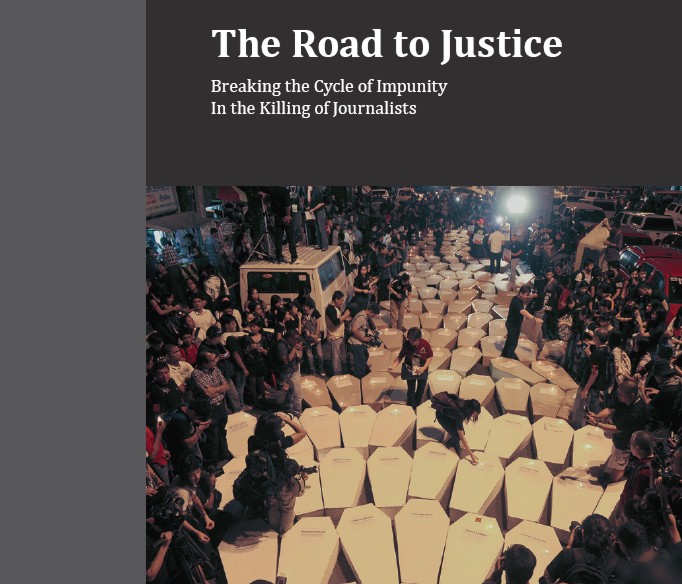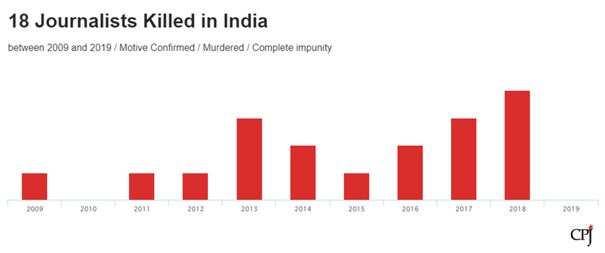The Committee to Protect Journalists (CPJ) on October 29, released its Global Impunity Index of 2014. This index highlights countries where journalists are murdered in their journalistic capacity and the perpetrators go unpunished.

The methodology used by CPJ in compiling its comprehensive report, is very stringent and only when it is confirmed through data gathered that the individual was killed while engaged in journalistic capacity, it is determined to be a case of journalist’s murder. The report highlighted the fact that “between 2004 and 2013 370 journalists had been killed in retaliation for their work”. Impunity of crimes against journalists was given international recognition in 2013 when the United Nations (UN) vide a resolution proclaimed November 2 as “International Day to End Impunity for Crimes Against Journalists”.
The Global Impunity Index
The first Global Impunity Index was launched in 2008 and in 2014, its seventh index was released. The Index calculates murders for which no convictions have taken place. Each index identifies murders that have taken place in the previous decade and includes countries only with 5 or more unsolved cases during that decade.
India in the Index
India has appeared in the Index ever since the inception of the Index and has retained its place in the Index, albeit the position keeps changing. As per the Index, in the last decade, in seven cases of journalists’ murders the culprits have received complete impunity.
The complete report can be read here.
Every two years, UNESCO asks from states a status update on judicial inquiries conducted in cases of journalists’ killings, as well as the actions taken to hold perpetrators accountable. India is one of the many countries which hasn’t provided such information to the UNESCO, it being a voluntary exercise.
As per CPJ, between 1992 and 2019, 37 journalists have been slain in India and out of them 32 are cases where the culprits have gotten complete impunity; if limited to the last decade, this number stands at 18. Basically, 18 journalists who have died in India in the past decade have not received justice. The latest one of such casesis of Chandan Tiwaria local reporter with Hindi daily Aj in Jharkhand’s Chatra district who had reported on a Maoist leader’s indulgence in corruption and was murdered by 4 Maoists in October 2018. Although the FIR includes their names, no chargesheet had been filed until December 2018. The most prominent cases in the past few years is the murder of Gauri Lankesh who was the Editor of Gauri Lankesh Patrike, a Kannada-language weekly tabloid known for its criticism of right-wing extremism and the establishment. She was shot at by three unidentified assailants outside her home in September 2017. A Special Investigation Team (SIT) identified 18 accused in the case and the case is still awaiting justice in the Court.
In a special report of 2016, CPJ also reported that between 1992 and July 2016,in India more than half journalists who were killed were regularly reporting on corruption. Even if one takes into account the fact that the judiciary is burdened and it takes years before accused are convicted, the data from 1992 to 2002 may be considered and in that decade only 1 journalist’s murder was served with justice while 9 journalists’ murder were not.The trend of the last decade can be seen in the following bar graph:

The above graph is a representation of data gathered by CPJ in the last decade of journalists murdered and in whose case justice has not been served. Evidently, since 2015, the trend has been rising in India and the same is a matter of worry.
Freedom of press is embedded and entrenched in our freedom of speech and expressions and has been identified so by our country’s Supreme Court in various judgments time and again. Impunity in cases of journalists’ murders “is an open invitation for further violence,” said the United Nations high Commissioner for Human Rights.